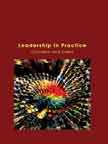HP's Strategy and Operations under Carly Fiorina and Mark Hurd
|
|
ICMR HOME | Case Studies Collection
Case Details:
Case Code : LDEN042
Case Length : 19 Pages
Period : 1999-2006
Pub Date : 2006
Teaching Note : Available
Organization : Hewlett Packard Company Industry : Computers and Information
Technology
Countries : USA
To download HP's Strategy and Operations under Carly Fiorina and Mark Hurd case study
(Case Code: LDEN042) click on the button below, and select the case from the list of available cases:

Price:
For delivery in electronic format: Rs. 300;
For delivery through courier (within India): Rs. 300 + Shipping & Handling Charges extra
»
Leadership and Entrepreneurship Case Studies
» Case Studies Collection
» ICMR HOME
» Short Case Studies
» View Detailed Pricing Info
» How To Order This Case
» Business Case Studies
» Area Specific Case Studies
» Industry Wise Case Studies
» Company Wise Case Studies

Please note:
This case study was compiled from published sources, and is intended to be used as a basis for class discussion. It is not intended to illustrate either effective or ineffective handling of a management situation. Nor is it a primary information source.
Chat with us

Please leave your feedback

|
|




<< Previous
Background
|
William Hewlett (William) and David Packard (David), two electrical engineers
from Stanford University, founded HP in 1938, in a garage behind David's home in
Palo Alto, California. HP initially sold electronic instruments. The company's
first product was a resistance-capacity audio oscillator, an electronic
instrument used to test sound equipment. One of the big customers for the
product was the Walt Disney Company,7
which used the product in the making of the movie Fantasia. In 1940, William and
David set up their own factory in Palo Alto, under the name Hewlett Packard. HP
continued to grow as an electronic equipment company throughout the 1940s. The
company was incorporated in 1947, after which David became the president and
William the vice president.
|

|
By the end of the 1940s, HP's revenues had crossed two million dollars
and the company employed 166 people. During the 1950s, HP gained prominence
as a producer of innovative measuring and testing equipment of superior
quality.
|
|
The company went public in 1957. In 1958, HP made its first
acquisition when it bought F.L. Moseley Company, a company that produced
high-quality graphic recorders. HP began entering overseas markets towards
the end of the 1950s. In 1959, it opened a marketing office in Switzerland
and a manufacturing plant in Germany. It was also during the 1950s that
William and David formulated the HP corporate objectives. These objectives
laid out HP's values relating to profit, customers, fields of interest,
growth, people, management and citizenship.8
These corporate objectives also formed the basis for the 'The HP Way', which
referred to the management style at the company (Refer to Exhibit III for
The HP Way). |
Over the years, William and David had transformed HP into a
'democratic' organization where all the employees were treated equally. Even in
the 1950s, employees at all levels of the hierarchy addressed each other, and
their bosses, by their first names. During the 1960s, HP increased its presence
in the international market. In 1963, the company entered the Asian market by
forming a joint venture, Yokogawa Hewlett-Packard, with Yokogawa Electric Works
of Japan. HP also made some acquisitions during the 1960s.
Excerpts>>
|
|










